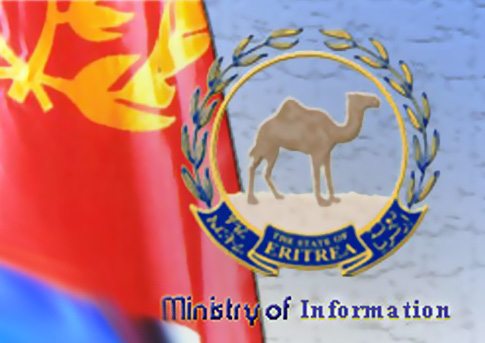Jan. 25-Feb. 11, 2011 — Egyptians stage nationwide demonstrations against nearly 30 years of Mubarak’s rule. Hundreds of protesters are killed as Mubarak and his allies try to crush the uprising.
Feb. 11, 2011 — Mubarak steps down and the military takes over. The military dissolves parliament and suspends the constitution, meeting two key demands of protesters.
Nov. 28, 2011-Feb 15, 2012 — Egypt holds multistage, weekslong parliamentary elections. In the lawmaking lower house, the Muslim Brotherhood wins nearly half the seats, and ultraconservative Salafis take another quarter. The remainder goes to liberal, independent and secular politicians. In the largely powerless upper house, Islamists take nearly 90 per cent of the seats.
May 23-24, 2012 — The first round of voting in presidential elections has a field of 13 candidates. The Brotherhood’s Mohammed Morsi and Ahmed Shafiq, the last prime minister under Mubarak, emerge as the top two finishers, to face each other in a runoff.
June 14, 2012 — The Supreme constitutional Court orders the dissolving of the lower house of parliament.
June 16-17, 2012 — Egyptians vote in the presidential runoff between Morsi and Shafiq. Morsi wins with 51.7 per cent of the vote.
June 30, 2012 — Morsi takes his oath of office.
Nov. 19, 2012 — Members of liberal parties and representatives of Egypt’s churches withdraw from the 100-member assembly writing the constitution, protesting attempts by Islamists to impose their will.
Nov. 22, 2012 — Morsi unilaterally decrees greater powers for himself, giving his decisions immunity from judicial review and barring the courts from dissolving the constituent assembly and the upper house of parliament. The move sparks days of protests.
Nov. 30, 2012 — Islamists in the constituent assembly rush to complete the draft of the constitution. Morsi sets a Dec. 15 date for a referendum.
Dec. 4, 2012 — More than 100,000 protesters march on the presidential palace, demanding the cancellation of the referendum and the writing of a new constitution. The next day, Islamists attack an anti-Morsi sit-in, sparking street battles that leave at least 10 dead.
Dec. 15, Dec. 22, 2012 — In the two-round referendum, Egyptians approve the constitution, with 63.8 per cent voting in favour. Turnout is low.
Jan. 25, 2013 — Hundreds of thousands hold protests against Morsi on the 2-year anniversary of the start of the revolt against Mubarak, and clashes erupt in many places.
Feb.-March 2013 — Protests rage in Port Said and other cities for weeks, with dozens more dying in clashes.
April 7, 2013 — A Muslim mob attacks the main cathedral of the Coptic Orthodox Church as Christians hold a funeral and protest there over four Christians killed in sectarian violence the day before. Pope Tawadros II publicly blames Morsi for failing to protect the building.
June 23, 2013 — A mob beats to death four Egyptian Shiites in a village on the outskirts of Cairo.
June 30, 2013 — Millions of Egyptians demonstrate on Morsi’s first anniversary in office, calling on him to step down. Eight people are killed in clashes outside the Muslim Brotherhood’s Cairo headquarters.
July 1, 2013 — Huge demonstrations continue, and Egypt’s powerful military gives the president and the opposition 48 hours to resolve their disputes, or it will impose its own solution.
July 2, 2013 — Military officials disclose main details of the army’s plan if no agreement is reached: replacing Morsi with an interim administration, cancelling the Islamist-based constitution and calling elections in a year. Morsi delivers a late-night speech in which he pledges to defend his legitimacy and vows not to step down.
July 3, 2013 — Egypt’s military chief announces that Morsi has been deposed, to be replaced by the Chief Justice of the Supreme constitutional Court until new presidential elections. No time frame is given. Muslim Brotherhood leaders are arrested. Tens of thousands of Morsi supporters remain camped out in two mass sit-ins in Cairo’s streets.
July 4, 2013 — Supreme constitutional Court Chief Justice Adly Mansour is sworn in as Egypt’s interim president.
July 5, 2013 — Mansour dissolves the Islamist-dominated upper house of parliament as Morsi’s supporters stage mass protests demanding his return. Clashes between pro- and anti-Morsi groups in Cairo and Alexandria, and violence elsewhere leave at least 36 dead. A Brotherhood strongman, deputy head Khairat el-Shater, is arrested.
July 8, 2013 — Egyptian soldiers open fire on pro-Morsi demonstrators in front of a military base in Cairo, killing more than 50. Each side blames the other for starting the clash near the larger of the two sit-ins, near east Cairo’s Rabaah al-Adawiya mosque. Mansour puts forward a time line for amending the constitution and electing a new president and parliament by mid-February. The Brotherhood refuses to participate in the process.
July 9, 2013 — Mansour appoints economist Hazem el-Beblawi as prime minister and opposition leader Mohamed ElBaradei as vice-president. A military announcement backs up the appointments.
July 26, 2013 — Millions pour into the streets of Egypt after a call by the country’s military chief for protesters to give him a mandate to stop “potential terrorism” by supporters of Morsi. Five people are killed in clashes. Prosecutors announce Morsi is under investigation for a host of allegations including murder and conspiracy with the Palestinian militant group Hamas.
July 27, 2013 — Security forces and armed men in civilian clothes clash with Morsi supporters outside the larger of the two major sit-ins in Cairo, killing at least 80 people.
July 30, 2013 — The EU’s top diplomat Catherine Ashton holds a two-hour meeting with detained Morsi at an undisclosed location. She is one of a number of international envoys, including U.S. Sens. John McCain and Lindsey Graham, to visit Egypt to attempt to resolve the crisis.
Aug. 7, 2013 — Egypt’s presidency says that diplomatic efforts to peacefully resolve the standoff between the country’s military-backed interim leadership and the Muslim Brotherhood have failed.
Aug. 11, 2013 — Egyptian security forces announce that they will besiege the two sit-ins within 24 hours to bar people from entering.
Aug. 12, 2013 — Authorities postpone plans to take action against the camps, saying they want to avoid bloodshed after Morsi supporters reinforce the sit-ins with thousands more protesters.
Aug. 14, 2013 — Riot police backed by armoured vehicles and bulldozers clear two sprawling encampments of supporters of ousted President Mohammed Morsi, sparking clashes that kill at least 638 people. The presidency declares a monthlong state of emergency across the nation as Vice-President Mohamed ElBaradei resigns in protest over the assaults.
Aug. 15, 2013 — The Interior Ministry authorizes police to use deadly force against protesters targeting police and state institutions after Islamists torch government buildings, churches and police stations in retaliation against the crackdown on their encampments.
Aug. 16, 2013 — Heavy gunfire rings out throughout Cairo as tens of thousands of Muslim Brotherhood supporters clash with armed vigilantes in the fiercest street battles to engulf the capital since the country’s Arab Spring uprising. The clashes kill 173 people nationwide, including police officers.
Aug. 17, 2013 — Security forces raid a mosque in Egypt’s capital Saturday where protesters supporting the nation’s ousted president had been barricaded inside overnight. Meanwhile, the Muslim Brotherhood’s political arm announces that the son of its spiritual leader Mohammed Badie had been killed in clashes the day before.
*************
Source: Associated Press.






This is a great site publish, im happy I came across the idea. Ill come back down the monitor to check out some other posts in which